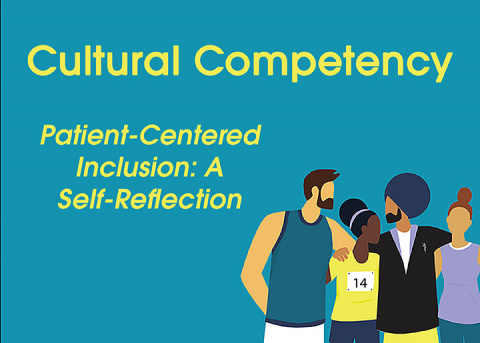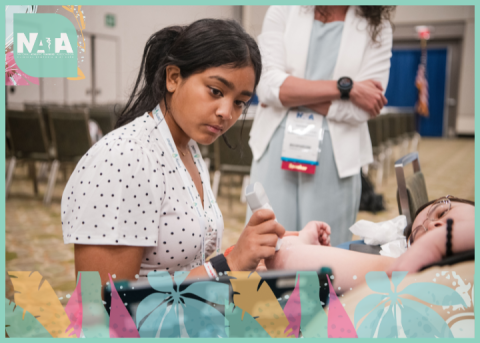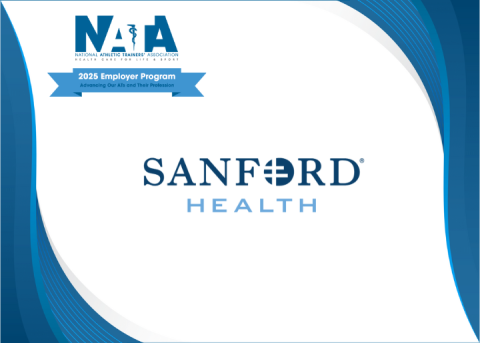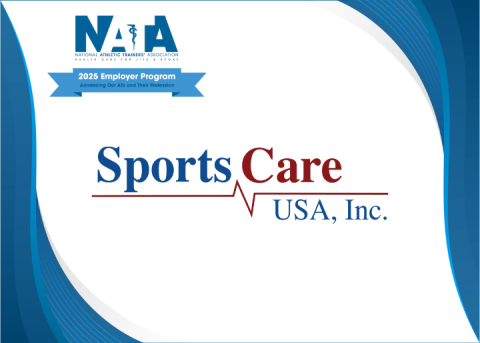
By Glenn Edgerton, EdD, ATC, and Dani Moffit, PhD, ATC
NATA LGBTQ+ Advisory Committee
Athletic training is a service occupation and those who enter into it should have the desire to serve others. A fundamental responsibility and purpose of any human service occupation is to meet the needs of all people and improve individuals’ quality of life. Inherent in these purposes is the attention and sensitivity to affirming people’s cultural diversity, including sexual orientation and gender identity. Regardless of your setting or who you work with, the culture of sexual orientation and gender identity may be part of the mix.
Within the United States workforce, institutional and interpersonal discrimination toward lesbian, gay, bisexual and transgender (LGBT) individuals is a pervasive problem.1 Researchers have identified workplace policies and practices that discriminate against members of the LGBT community, such as discriminatory hiring practices or organizational discrimination policies as well as incidents of verbal and physical aggression directed toward those identifying as LGBT.1
This is a chance for you to think about yourself. Do you see discrimination in your workplace? Do you ever, or have you ever, contributed to it? Do you observe it and ignore it? You aren’t on a Zoom meeting, you don’t have to raise your hand, but we ask that you self-reflect and decide whether you recognize yourself in any of the above situations. Your values and beliefs may influence how you treat your patient, and you need to be aware when your values and beliefs do not align with your patient’s values and beliefs.
In a nationwide report of workplace discrimination against LGBT individuals, it was noted that 37 percent of lesbian and gay individuals experienced workplace harassment or discrimination within the past five years.1 Further, 12 percent of lesbian and gay individuals reported losing their job due to their sexual orientation and 90 percent of transgender respondents reported harassment or mistreatment at work because of their gender identity.1
Researchers have confirmed that LGBT workplace discrimination is linked to detrimental outcomes, including those that are work-related and those that affect the overall health and well-being of LGBT individuals.1 For example, it was found that employee creativity and collaboration is impeded in a hostile environment resulting in decreased productivity.1 It has been documented that people are willing to quit their jobs as a result of LGBT discrimination.1 Among transgender individuals, researchers found that discrimination and harassment in the workplace was significantly associated with decreased workplace satisfaction.1 With respect to mental health, there are increased reports of depressive symptoms and psychological distress among lesbian, gay and bisexual individuals due to workplace heterosexism.1 Furthermore, LGBT employees’ physical and mental health is negatively affected due to feelings of anxiety and isolation and fear of LGBT identity disclosure.
Research is limited in athletic training, as is the case with most health professions, with most of it being in regards to perceptions of LGBTQ+ athletes. What is forgotten is the employee, and how discrimination can affect the workplace for them.
Some of you identify as LGBTQ+. Some of you do not. Think for a moment: Have any of you ever been placed in a minority status? If yes, were you bullied or harassed? If yes, how did you feel? If no, did you ever bully or harass a person in a minority status? Have you changed that about yourself? Do you still do it, not meaning to? Finally, do you have biases toward others who identify in the LGBTQ+ population?
Are you sure of your answers?
It’s important to note that the biases we are referring to are implicit, and everyone has implicit biases. Even us. We believe we are good people and work hard to combat implicit biases, but there are still times when judgement is passed.
Implicit biases are also known as social cognition. These are different than our normal biases that we know we hold or we try to conceal; these are implicit and are unconscious.2 Implicit biases are pervasive.2 Everyone possesses them, even people with avowed commitments to impartiality such as judges. Implicit biases explain the potential dissociation between what a person explicitly believes and wants to do (e.g., treat everyone equally) and the hidden influence of negative implicit associations on thought and action (e.g., perceiving an LGBTQ+ patient as less competent and thus deciding not prescribe the patient a medication).3
Implicit and explicit biases are related but distinct mental constructs.2 They are not mutually exclusive and may even reinforce each other. We generally tend to hold implicit biases that favor our own in-group, though research has shown that we can still hold implicit biases against our in-group.2 Implicit biases are malleable.2 Our brains are incredibly complex, and the implicit associations we have formed can be gradually unlearned through a variety of debiasing techniques.2
Reflect upon what you believe your implicit biases to be and understand that those biases can be altered and unlearned. Be willing to alter these biases and continue to be cognizant of future discovery of other implicit biases.
As health care providers, these implicit biases could alter the treatment of our patients, leading to poorer outcomes. It is also important to note that we aren’t immune to having implicit biases simply because we are health care providers. Because they are subconscious, they are not seen through introspection. We need to dig to find these. You may have implicit/unconscious ideas, the results of which don’t align with your declared beliefs or even reflect stances we would explicitly endorse.2 These are often manifested in fast-paced environments that require quick decision-making, like an athletic training facility.
Thinking of so many situations within health care and athletic training itself, we need to be aware. When you are in the room, be in the room. We need to provide our patients with the care they deserve.
Watch your words. Sexually explicit or harassing jokes are never appropriate. Misgendering patients is never appropriate. Know what actions or words could be construed as crossing the line. If you are asking the question, it probably does. Do you stand up for others? Do you stand up for yourself? Are you in the room? Are you aware of your actions?
In our world today that has increased cultural sensitivity, it’s simply not enough to be an ally for the LGBTQ+ community; we are asking that you be an active ally.
What do we do if we believe bullying or harassment is occurring? We need to stand up for ourselves and our patients. If we are health care providers who keep patients safe, how are we creating and enforcing environments where everyone feels safe? If you see something, say something.
Although there is increased awareness of the challenges facing youth and parents regarding gender and sexual orientation, we know that ATs have heard racial and anti-gay slurs in the workplace. Shouldn’t we look past our differences and treat our patients regardless of their gender or gender identity? Be cognizant of your words and your behaviors within your workplace. How people behave and the words used in the workplace affect the perception of inclusion.4
Finally, it’s important to remember that being subtle can be damaging. You are not always aware of what others are seeing in your actions and hearing in your word choice. Getting to a place where we are comfortable with how all identify is a critical step. Remember, we, as per 1.1 of both the BOC Standards of Professional Practice and the NATA Code of Ethics, are obligated to not discriminate on the basis of race, religion, sexual orientation or gender identity.
It is time for all of us to do our part to eliminate discrimination, harassment and bullying of individuals identifying as members or supporters of the LGBTQ+ community.
References
1. Sheridan, DJ, Zolobczul J, Huynh, K, Lee, DL. Workplace harassment and attitudes towards LGBT people: difference across human service occupations in South Florida. Florida Public Health Review. 2017;14:1-12.
2. Moffit, DM, Russ, A, Mansell, J. (2020, July). Sexual harassment and its impact in athletic training. Presentation for the Southwest Athletic Trainers’ Conference (online).
3. FitzGerald, C, Hurst, S. Implicit bias in healthcare professionals: a systematic review. MBC Medical Ethics. 2017;18:1-19.
4. Cunningham, GB. LGBT inclusive athletic departments as agents of social change. Journal of Intercollegiate Sport. 2015;8:43-56.





